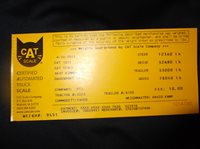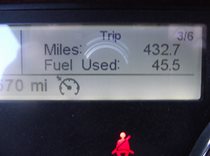
Scaling
It isn’t cheap anymore. The dominant scale company now charges $10 for the first weigh and recently doubled their reweigh fee to $2. I haul at least one heavy load per week that requires scaling, Scaling one load per week, costs me about $500 per year. My annual scale expense is closer to $700. Stopping to scale is an inconvenience. It isn’t hard to find a truck scale. Almost every major truck stop has one. The problem is getting off the highway, then scaling and THEN parking your truck. Even after that you have to park your truck. Then wait in line at the fuel counter. If you’re lucky the process will take 15 minutes. It is more likely to take closer to 30 minutes.
The dominant scale company has at least 3 pay at the scale locations. One of them is at the TA truck st

op in Walcott, IA. This is outstanding. You just pull on the scale. You will be asked to fill out the basics, like truck number, trailer number, company name, etc. Then swipe your credit card and your scale ticket, like the one on the right, prints off right there.
Getting caught over weight on an axle can cost about the same as a year of weekly scales. An over gross violation can get extremely costly. If you can’t get legal at the scale and need someone to come out and either shift the weight or take some off, it can cost thousands. Even being “a little” over on an axle might trigger an inspection.

Fueling can become an issue. Fuel weighs a little less than 8 pounds a gallon. Before I had my Evolution I figured that I burned off about 1lb per mile. Now, it is a little less. I will always remember being asked by my company at the time to meet a company driver at the Oak Creek, WI scale. He was about 500 lbs over gross and needed some weight taken off. He was a large guy, with a plus size wife, an extremely large teen age son and 2 Huskies in the truck. To boot,
he had just fueled at the truck stop 5 miles before the scale, when there was the same brand just past the scale. If he had waited until after the scale to fuel, he would have been fine. While I don’t make it a habit of fueling to the point of being overweight, I fuel AFTER the scale when I am close. For instance if I am heading north into Kentucky I can fuel at exit 2. There are truck stops at exit 6. The scale is at the 3 mm. Why fuel at exit 2? With IN closing there northbound scales, I won’t cross another state scale for over 500 miles.
My Cascadia Evolution has an air gauge on the drive axles. I know where 33,000 lbs is at on that gauge. If I am hauling a heavy load I will try to get to as close to or a little over until I can actually scale it out. I have fallen victim to shippers that understate the weight on the bills. One time in particular I pulled a “37,000 pound” load out of the Jersey ports on the Delaware River. My drive axle gauge was about 32,000 pounds. As I crossed PA I noticed that it was not pulling very well. When I got to a truck stop near Lancaster, I scaled it and I weighed over 83,000 pounds. That puts an owner operator between a rock and a hard spot. There is no good choice. The legal choice is to sit right there and call someone to take off the weight. Be aware of any shipper who loads heavy loads and has no onsite scale. Hopefully, they will and will axle you out. Taking advantage of onsite scales saves you time and money. I will gladly pay a shipper to use their scale.
Scales are a necessary expense in our business. Scaling is like preventive maintenance. We don’t like spending money on it, but spending a little now can save us a lot down the road.